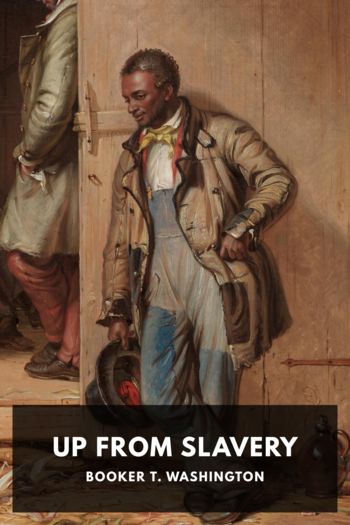A Calculated Risk, Katherine Neville [english novels for students txt] 📗

- Author: Katherine Neville
Book online «A Calculated Risk, Katherine Neville [english novels for students txt] 📗». Author Katherine Neville
“Right,” agreed Georgian. “Everything else can just be photographed and printed right from the photo, without making engraving plates. That is, everything but the denomination of the bond—its ‘face value.’ That seems to be engraved rather than printed on every kind of bond.”
“But run your fingers over that number,” said Tor. “It may be engraved, but the ink is just a bit thicker than the parts of the bond that are only printed. Furthermore, the denomination is located in the center of the certificate. If the border around it’s engraved—and that’s what you’d be most likely to touch when you’re thumbing through a pile of securities—you’d hardly notice whether some flowery number in the middle was engraved or printed.”
“It would certainly cut down on time,” Georgian admitted. “I can get eight securities on one photo negative, and print right from that. A lot easier than taking the photo and then making eight engraving plates before printing.”
“I’m willing to take this risk if you are,” Tor told her. “After all, I’m the one who has to deliver these fakes to the Depository Trust. I’ll be the one caught with his pants down, if these don’t pass inspection.”
“I’d like to get a photo of that.” Georgian laughed. But she looked really worried. “I’m so nervous when the least little thing goes wrong,” she explained. “I feel like we’ve walked into a nightmare.…”
“No time for the nightmares—or the reveries, either,” said Lelia, coming to remove the soup bowls. “You must not put off until tomorrow what you can do the day after.”
“All right, Mother.” Georgian laughed. “Get the hair dryer—it looks like we’re in business.”
It was two-thirty when Lelia entered the ancient, fishy-smelling foyer of the South End Yacht Club below Whitehall on East River Drive, a large envelope tucked beneath her arm containing the twenty completed certificates.
“Excuse me, ma’am”—the porter stopped her—“but you can’t enter unless accompanied by a member.”
“But Dr. Tor is expecting me—on a matter of grave urgence,” she explained.
“Perhaps he’s been detained,” said the porter. “He hasn’t come in today.”
Lelia was about to protest, when the porter looked up toward the door in alarm. Tor was bounding up the steps, covered with mud, in his frayed tweed and faded pants, the pannier baskets swinging from his shoulder.
“I’m glad you waited, darling,” he said, taking Lelia gingerly by the sleeve of her fur coat. “George—this is Baroness Daimlisch. We’ll be having tea in the private dining room, it’s reserved. And send up a bottle of that thirty-two claret, will you?”
The astounded porter tried not to look at Tor’s costume, but reached into the closet behind him and brought out a necktie printed with the tiny block insignia of the club. This he handed to Tor, who draped it around the neck of his burgundy sweater and made a knot.
Then he offered Lelia his arm and headed for the room.
“Oh, and George,” he called over his shoulder, “keep an eye on my bicycle, will you? It’s just out front.”
“Certainly, sir,” George replied.
“This is excellent claret,” Lelia said as she sat beside the fireplace in the dimly lit, paneled private club room.
“And these are exquisite engravings,” Tor replied, thumbing through them carefully. “Now we’ll put them back into the right satchels for delivery. I’ve picked up some more while you and Georgian were working on these. It’s a quarter to three now; do you think you can get back uptown, copy them, and return by five so I can get them into the Depository?”
“It will be difficile,” Lelia admitted. “But she has completed this last printing in less than one hour. It was the time required for me to get here from the subway that makes it so long. Though this is faster than the taxi.”
“Perhaps I can meet you at the subway, then?” he suggested. “And no more stopping for lunch or cocktails, after today. Time’s of the essence, so I’m happy you’re willing to be our runner. I hope you understand, though, you’re taking a risk.”
“What is life, if one is afraid to take the chances?” asked Lelia.
Tor nodded and looked down at one of the fake securities they’d done. He ran his fingers over the scalloped number at center, which read: “$5,000 and no/100”—a number that had been printed rather than engraved. Only an expert would notice the difference. It was the sentence six lines below it that bothered him. Not because of the way it looked, but because of what it said: “Subject to prior redemption, as provided herein.”
They’d printed a callable bond—a security that could be “called in” like a note if the issuer wanted to pay it off early—why hadn’t he noticed that earlier?
Oh well, he thought, it couldn’t be helped. The likelihood was slim that anything would happen. And, as Lelia said, what was life if one was afraid to take the chances?
Tor slipped the bond into the satchel for the Depository Trust.
The Depository Trust’s forty stories of concrete and glass concealed a vaultlike inner construction where hundreds of thousands of securities, like those in Tor’s bag, were stored.
Most standard deliveries were made through the front entrance, which housed the Chemical Bank. But the deliveries that counted—the constant traffic in securities—were made through the rear of the building.
At the back of 55 Water Street was a pair of nondescript doors made of twelve-inch steel. Beyond the steel doors was a series of double-door “mantraps.” Through them passed, all day long, unkempt messengers in faded jeans and sneakers, delivering satchels and suitcases packed with corporate and municipal bonds, common and preferred stocks.
The vaults where the securities were stored were located in labyrinthine, multilevel subbasements of the building. But the messengers never entered these hallowed halls, nor did they enter the offices scattered throughout the upper stories. Everything beyond the steel doors was controlled by security camera, security badge, and





Comments (0)